Croatia is blessed with a rich history and great natural beauty, and the state ensures that these treasures are well preserved, with constant renovations and careful maintenance. Consequently, as of May 2009, Croatia has seven sites listed on the UNESCO World Heritage List, with many other sites awaiting World Heritage status.
World Heritage Croatia Sites Include:
The Old City of Dubrovnik (Inscripted in 1979)
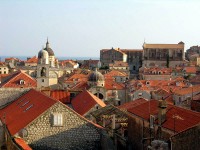 Dubrovnik is Croatia’s most famous city. Founded in the 7th century, the old city is encased in what is considered Europe’s greatest fortification; the thick city walls stretch for 1940 meters and include three fortresses. Inside, are towers, palaces, churches, defense posts, and homes, all clustered around wobbly stone paved streets. The fortifications that protected Dubrovnik so well against invading Turks and Venetians couldn’t, however, stop the damage during the Balkan War in the early 90s. A large part of this historic city was damaged by shelling and bombs. However, since then, a massive restoration programme, backed by UNESCO, has restored Dubrovnik to its former glory.
Dubrovnik is Croatia’s most famous city. Founded in the 7th century, the old city is encased in what is considered Europe’s greatest fortification; the thick city walls stretch for 1940 meters and include three fortresses. Inside, are towers, palaces, churches, defense posts, and homes, all clustered around wobbly stone paved streets. The fortifications that protected Dubrovnik so well against invading Turks and Venetians couldn’t, however, stop the damage during the Balkan War in the early 90s. A large part of this historic city was damaged by shelling and bombs. However, since then, a massive restoration programme, backed by UNESCO, has restored Dubrovnik to its former glory.
The Diocletian Palace of Split (Inscripted in 1979)
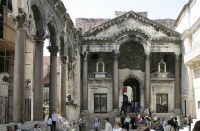 The Diocletian Palace in Split is one of the best preserved Roman complexes in the world. It was built in the late 3rd century by the Roman Emperor Diocletian as a retirement home. Situated in the heart of Roman Dalmatia, the palace was lavish and well protected. It encompassed the Emperor’s accommodation, a courtyard (known as the Perystile), a mausoleum, military barracks with staff quarters, and underground vaults. The magnificent courtyard is still intact, its ornate columns and arches now shield coffee shops and tourists. Other points of interest in Split includes the underground vaults and the Cathedral of St. Dominus.
The Diocletian Palace in Split is one of the best preserved Roman complexes in the world. It was built in the late 3rd century by the Roman Emperor Diocletian as a retirement home. Situated in the heart of Roman Dalmatia, the palace was lavish and well protected. It encompassed the Emperor’s accommodation, a courtyard (known as the Perystile), a mausoleum, military barracks with staff quarters, and underground vaults. The magnificent courtyard is still intact, its ornate columns and arches now shield coffee shops and tourists. Other points of interest in Split includes the underground vaults and the Cathedral of St. Dominus.
Plitvice Lakes National Park (Inscripted in 1979)
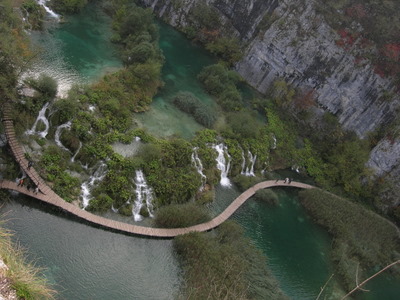 The Plitvice Lakes National Park lies between the Mala Kapela and Pljesivica mountain ranges. The park is a string of sixteen lakes formed on a basin of karstic rock – dolomite and limestone. Over the years, the interaction of water and limestone has resulted in the creation of natural travertine barriers. These in turn have created spectacular dams and waterfalls. This continuous geological process ensures preservation of the region; it is what allowed the Plitvice Lakes National Park to recover after suffering damage during the war. The highlight of the lakes is the constantly changing colour of the water. Depending on the minerals and organisms in the water and the position of the sun, the water swirls between the many shades of blue and green.
The Plitvice Lakes National Park lies between the Mala Kapela and Pljesivica mountain ranges. The park is a string of sixteen lakes formed on a basin of karstic rock – dolomite and limestone. Over the years, the interaction of water and limestone has resulted in the creation of natural travertine barriers. These in turn have created spectacular dams and waterfalls. This continuous geological process ensures preservation of the region; it is what allowed the Plitvice Lakes National Park to recover after suffering damage during the war. The highlight of the lakes is the constantly changing colour of the water. Depending on the minerals and organisms in the water and the position of the sun, the water swirls between the many shades of blue and green.
Episcopal Complex of the Euphrasian Basillica, Porec (Inscripted in 1997)
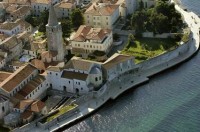 The Episcopal Complex of the Euphrasian Basillica in Porec is one of the most impressive of Croatia’s churches. Named after the saint Euphrasia, the Euphrasian Basillica and complex is a surviving example of early Byzantine art in the region. The complex includes a 6th century basilica, a sacristy, a baptistery, bell towers and the archbishop’s palace. While the entire complex is impressive, the most striking feature of the Basilica is the glittering apse, decorated with Byzantine figural mosaics; the intricate art work is elaborate and spellbinding, to say the least.
The Episcopal Complex of the Euphrasian Basillica in Porec is one of the most impressive of Croatia’s churches. Named after the saint Euphrasia, the Euphrasian Basillica and complex is a surviving example of early Byzantine art in the region. The complex includes a 6th century basilica, a sacristy, a baptistery, bell towers and the archbishop’s palace. While the entire complex is impressive, the most striking feature of the Basilica is the glittering apse, decorated with Byzantine figural mosaics; the intricate art work is elaborate and spellbinding, to say the least.
The Old Core of Trogir (Inscripted in 1997)
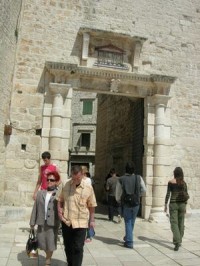 Trogir is a town-museum on Croatia’s Dalmatian coast. Situated between the island of Ciovo and the mainland, the islet was first settled in the 3rd century by the Greeks. Trogir’s medieval core, cased within city walls, is one of the best preserved Romanesque-Gothic complexes in central Europe. Inside, along narrow stone paved lanes you’ll find exquisite artworks, lavish palaces and ornate churches, the highlight of which is the St. Lawrence Cathedral with its elaborate entrance portal.
Trogir is a town-museum on Croatia’s Dalmatian coast. Situated between the island of Ciovo and the mainland, the islet was first settled in the 3rd century by the Greeks. Trogir’s medieval core, cased within city walls, is one of the best preserved Romanesque-Gothic complexes in central Europe. Inside, along narrow stone paved lanes you’ll find exquisite artworks, lavish palaces and ornate churches, the highlight of which is the St. Lawrence Cathedral with its elaborate entrance portal.
Cathedral of St. James, Sibenik (Inscripted in 2000)
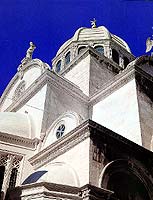 The Cathedral of St. James is situated in the Dalmatian town of Sibenik . Built with marble and limestone between 1431 and 1535, the Cathedral encompasses the Venetian, Gothic and Renaissance architectural styles. While the Cathedral of St. James suffered great damage during World War II and the Balkan Conflict, it has now been restored to its original splendour. Of special mention is the cathedral’s unique frieze decorated with sculpted heads of citizens from the 15th century.
The Cathedral of St. James is situated in the Dalmatian town of Sibenik . Built with marble and limestone between 1431 and 1535, the Cathedral encompasses the Venetian, Gothic and Renaissance architectural styles. While the Cathedral of St. James suffered great damage during World War II and the Balkan Conflict, it has now been restored to its original splendour. Of special mention is the cathedral’s unique frieze decorated with sculpted heads of citizens from the 15th century.
Stari Grad Plain, Hvar (Inscripted in 2008)
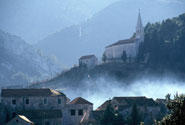 The Stari Grad Plain is Croatia’s latest addition to the Heritage List. This unique site situated on the island of Hvar is the most fertile plain on the Adriatic. The reason it finds a spot on this list is that its agricultural landscape, comprising vineyards and olive groves, has been intact since the ancient Greeks colonized the island in the 4th century. As it was then, the land is divided in the ancient Greek geometric system referred to as Chora. Not only this, the landscape still holds the ancient stone walls and shelters from that time. Along with the architectural setting, the town’s historic core also comes under the cover of world heritage site.
The Stari Grad Plain is Croatia’s latest addition to the Heritage List. This unique site situated on the island of Hvar is the most fertile plain on the Adriatic. The reason it finds a spot on this list is that its agricultural landscape, comprising vineyards and olive groves, has been intact since the ancient Greeks colonized the island in the 4th century. As it was then, the land is divided in the ancient Greek geometric system referred to as Chora. Not only this, the landscape still holds the ancient stone walls and shelters from that time. Along with the architectural setting, the town’s historic core also comes under the cover of world heritage site.


Comments